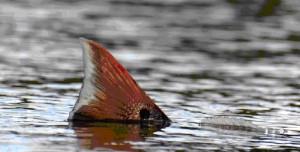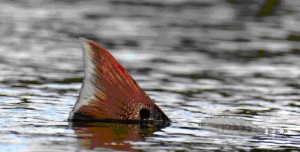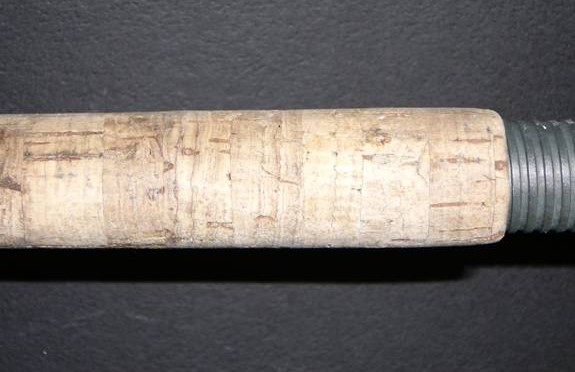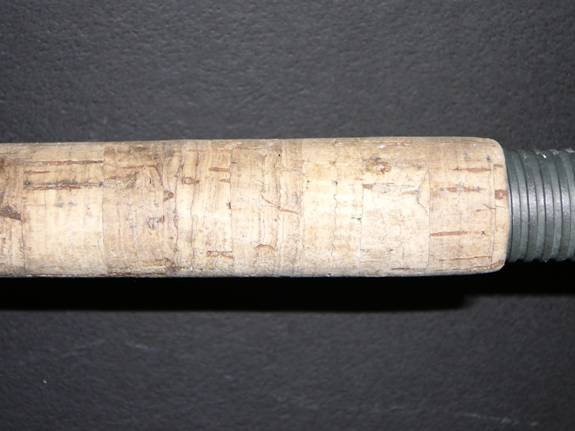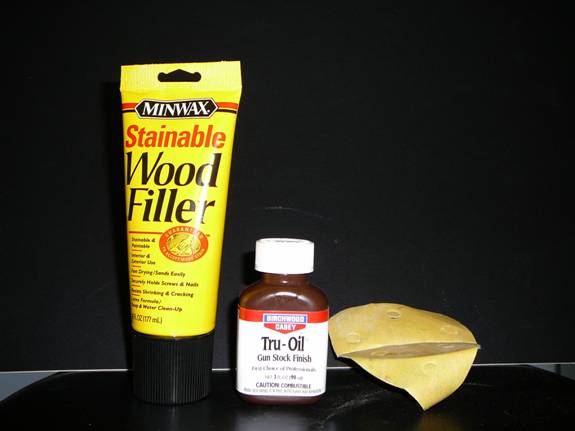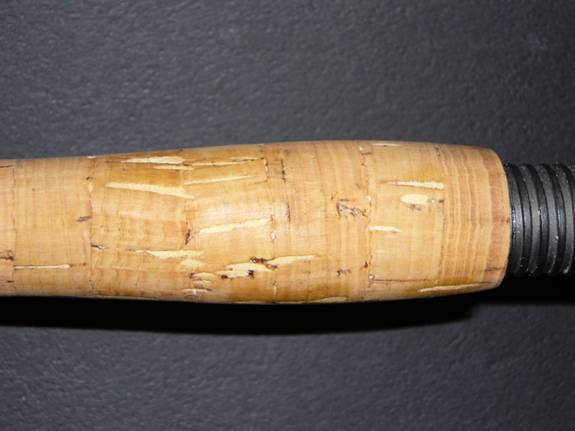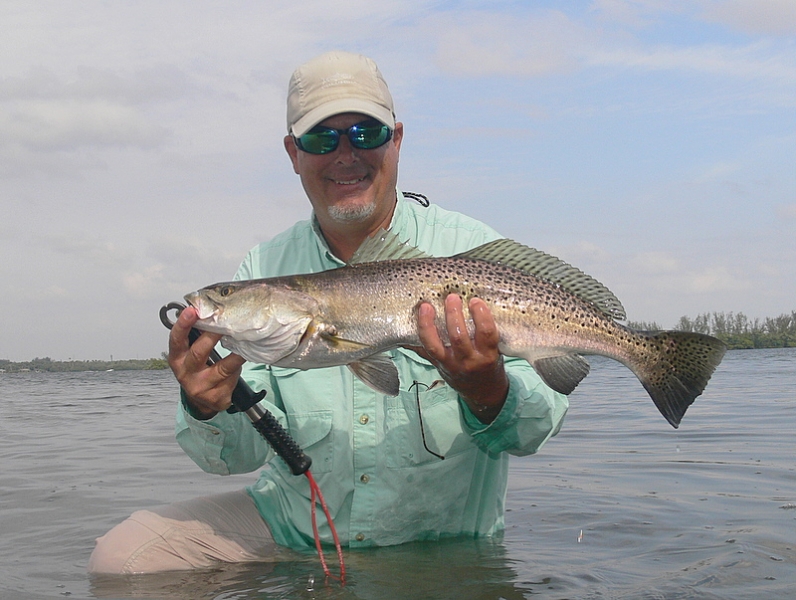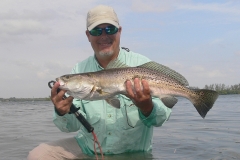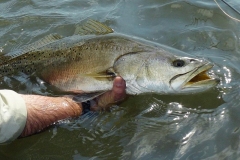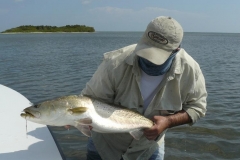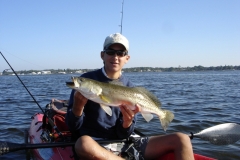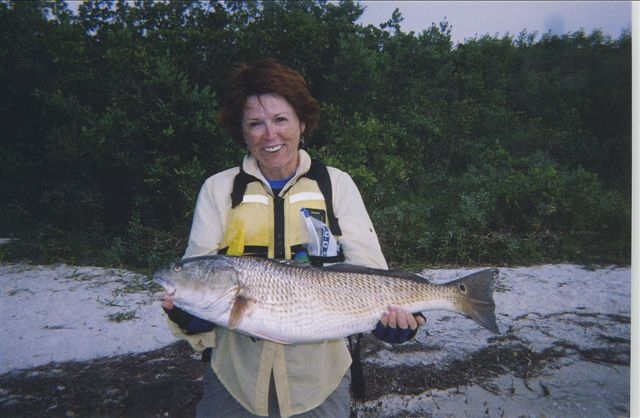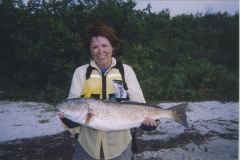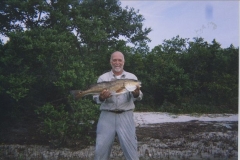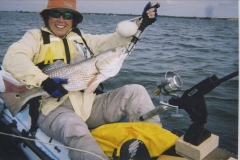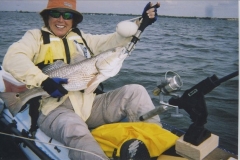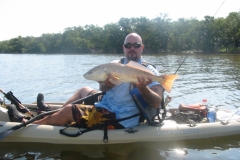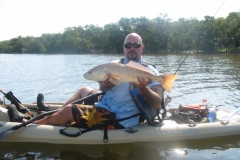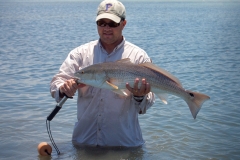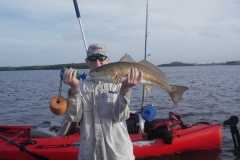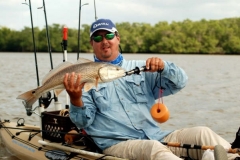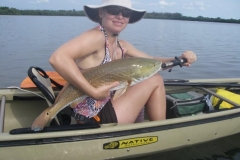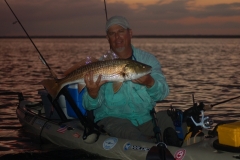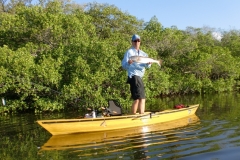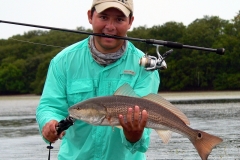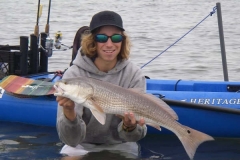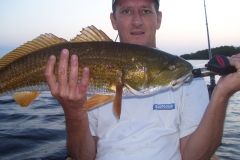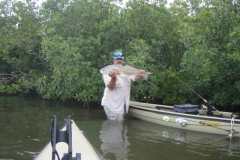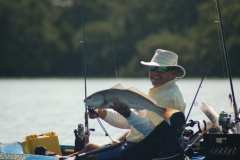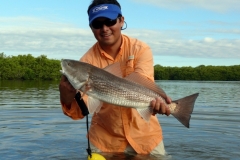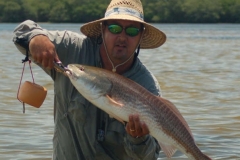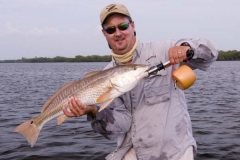Lure Choice: The Differences are the Same
By: Bill “Heywood” Howard
A while ago I came upon a hook and jig manufacture based out of Jacksonville called Slayer Inc. I took a look at their website and liked what I saw, weedless jerk bait hooks. As a big user of soft plastics like Mister Twister Exudes and D.O.A.’s, I’m always on the lookout for these types of hooks. I was really impressed with their service and order response time. But that’s not what I’m writing about this week, on their website they had several different types of in-line spinner baits. After talking with the owner about these lures, I decided to do a informal survey of different kayak fishing sites around the gulf coast. When I talked with Chris at Slayer I told him that those types of lures were not very popular here in the Tampa Bay area and he agreed. We both felt that our fish here are way to spooky for these lures. So, I thought I would ask different fisherman what their “Go To” redfish lure would be. I expected to see some big differences based on location, but man was I surprised.
Starting with the Texas Kayak Fisherman, I was really surprised at some of the selections as well as some of the comments. The top choice by far was some type of spoon, either gold or silver. Tied for second was either some type of Gulp or a Heddon Spook Jr in non other than Bone color. The choice of top water was very interesting. I never consider a top water lure when targeting redfish, more often I will use it as a locater or search lure, using it to locate them and then use some sort of plastic to catch them. Another lure that seems popular is flats minnow made by the Texas Tackle Factory. A search of their website uncovered some very interesting choices and color combinations. Check them out. One of the comments made by more than one forum member was that they don’t really target redfish. “Don’t target redfish?” “Why the heck not?” I asked. Well, it seems they have really big trout in Texas, kind of like our snook, so that’s the preferred species.
Moving over to Louisiana, gold spoons or inline spinner baits were the dominate lure of choice. Other than that, I didn’t get much information from those boys. They must be to busy out catching all those big redfish I see on TV. Shoot, they swim right up to the boat sometimes. Must be nice to not have the fishing pressure we do here. I know one thing about the area, they do not practice Catch and Release. They are meat fisherman. Their bag limits are outrageous.
Moving over to Florida, I concentrated my research to the Tampa Bay area. I do know up in places like Jacksonville that those in-line spinners are very popular. The water clarity up there is not like what we have here, its very stained and tannic, so those lures work really well. A poll on Paddle-Fishing.com revealed choices very similar to the Texas fisherman. An over whelming favorite was some sort of spoon, in gold or silver. I cant find a fault with this choice one bit. A Johnson Gold Spoon is one of the first lures I learned to use. Pretty fool proof once you learn the correct way to retrieve it. A spoon should wobble, not spin when you retrieve it. Once you get the hang of it, it’s a great lure for redfish. Tied for second were Gulps , Mister Twister Exudes or some type of jig and soft plastic. Not as many top waters as the Texas folks.
One thing I did find very interesting was the number of lures I had never heard of before. Cotton Cordell Jointed lure, Manns Baby Minus 1, Wahoo Redfish Key were just some of the lures mentioned by anglers as their favorites. No old school lures though. Growing up fishing with my dad, we had a long time Tampa Bay fisherman show us one of his tricks one day. He pulled out a bag of twin tail bass worms. Pinching off the front half and rigging it on a red jig head, we proceeded to slay the redfish. Casting into the sand holes this lure was deadly and still is to this day. Heck, I know a guy that has used yellow shoe laces to catch redfish.
So what can you take away from this survey? I don’t know. The outcome of my research was way different than what I was expecting. I guess it comes down to this, redfish are pretty much the same all over, they will hit just about anything. Use what you have confidence in, that’s most important. If you have confidence in a lure you will use it longer and by doing that, you increase your chances of hooking that redfish your looking for.

